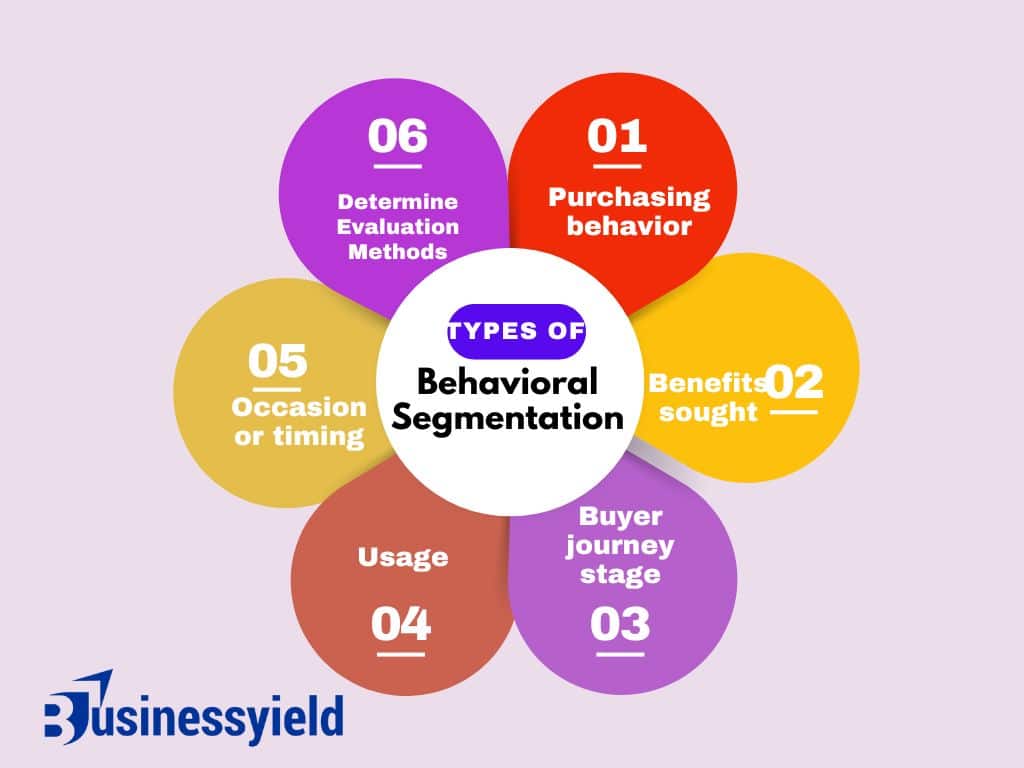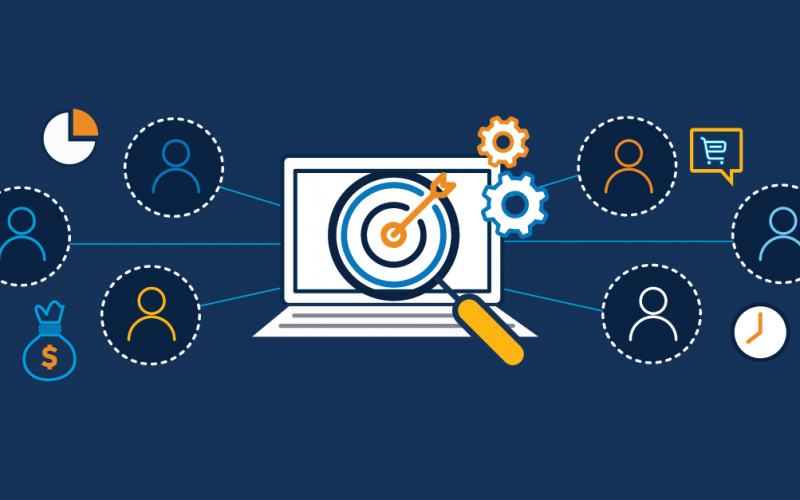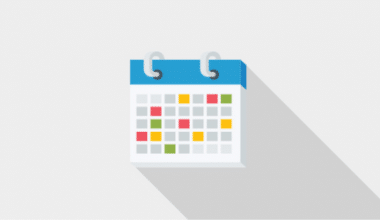In today’s fiercely competitive marketing landscape, one-size-fits-all campaigns are a surefire way to fail. Marketers yearn for a more profound comprehension of their target audience – their motivations, needs, and online behaviors. Behavioral segmentation is a crucial strategy that allows you to create highly targeted campaigns that truly connect with your audience and generate results.
Behavioral segmentation goes beyond the usual demographics such as age, location, and income. It emphasizes the reasoning behind customer behavior, enabling you to gain insights into their brand interactions, and purchase triggers, and even anticipate future actions.
According to a study conducted by Monetate, brands that utilize behavioral segmentation experience a significant boost in revenue, with some seeing an increase of up to 900%. Grasping a deeper understanding of your customers can unlock tremendous potential.
However, numerous marketers depend exclusively on fundamental segmentation techniques such as purchase history or website behavior. Discovering untapped possibilities in behavioral segmentation can completely transform your marketing strategy.
What is Behavioral Segmentation?
Behavioral segmentation categorizes consumers based on their behavior patterns when engaging with a company. Just as a marketing coordinator would do, this category of segmentation focuses on analyzing the behavioral traits of consumers. It involves studying their knowledge, attitude, usage, preferences, and responses to various products, services, promotions, or brands.
The goal of behavioral segmentation is to:
- Gain a deep understanding of how to cater to the unique needs and desires of different customer segments
- Customize your product or service to align with those needs and desires
- Uncover ways to enhance the buyer’s journey
- Determine the potential value they can bring to your business
- Create an intelligent marketing strategy to enhance and broaden your customer base
It’s worth mentioning that it cannot be considered in isolation from other forms of segmentation. Behavioral data often shows a correlation with characteristics such as a customer’s age, gender, location, income, and occupation. Behavioral data can frequently validate conclusions about other segmentation data.
What Makes Behavioral Segmentation Important?
By segmenting the market into smaller groups that share a common variable, brands can optimize their use of time and resources. If every consumer were to be exposed to the same marketing approach, its effectiveness would vary among individuals. By gaining a deeper understanding of your target audience and segmenting them accordingly, you can implement personalized advertising to effectively cater to their needs.
There are four key advantages to behavioral targeting:
- Personalization is key in effectively reaching different customer groups with tailored offers, at the right moments and through their preferred channels. This level of personalization helps to nurture customers throughout their buying journey.
- Using historical behavioral patterns to forecast and shape future customer behaviors and outcomes.
- Effective prioritization involves identifying prospects with the most potential business impact, allowing for more informed decisions on resource allocation.
- Monitoring growth patterns and changes in segments over time is crucial for gauging business health and tracking performance against goals.
Key Takeaways
- ehavioral segmentation categorizes consumers based on their interactions and behavioral patterns with a company, focusing on aspects such as purchase habits, usage, and responses to promotions.
- Utilizing behavioral segmentation allows marketers to deeply understand customer motivations and tailor marketing strategies to meet specific needs, enhancing personalization and customer engagement.
- There are various types of behavioral segmentation including purchasing behavior, benefits sought, usage rate, customer loyalty, and interaction during specific occasions or schedules.
- Effective behavioral segmentation enables prediction and shaping of future customer behaviors, aids in resource allocation by prioritizing high-impact prospects, and monitors segment changes to track business performance.
- Implementing behavioral segmentation involves gathering and analyzing detailed behavioral data, which can help optimize marketing strategies, increase conversions, and ultimately boost revenue significantly, with some brands experiencing increases up to 900%.
Types of Behavioral Segmentation

#1. Purchasing behavior
Examining purchase behavior-based segmentation involves analyzing how customers behave at various stages of the buying decision-making process. It assists businesses in gaining a comprehensive understanding of:
- Understanding how customers make purchasing decisions
- The intricacies of the purchasing process
- The role of the customer in the purchasing process
- Obstacles encountered during the journey to making a purchase
- Which behaviors have the highest and lowest correlation with making a purchase?
Four main categories can be used to break down purchasing behavior:
- Complex: The customer plays a crucial role in the purchasing and decision-making process, and there is a notable distinction between the brands under consideration. Take, for instance, when someone is faced with the choice of purchasing a Mercedes or a BMW. This decision carries a significant amount of weight and complexity.
- Variety-seeking: For customers who prefer a more hands-off approach to purchasing, but still value the unique offerings of different brands. As an illustration, a TRESemmé shampoo customer could experiment with Suave shampoo on a given day. Whether she finds it appealing or not, its significance is rather insignificant.
- Dissonance-reducing: When a customer is faced with a significant purchasing decision and is confronted with similar products from various brands. Take the scenario of a customer buying a new bedroom set. Their decision-making process may prioritize price over product quality.
- Typical: When making a purchase that doesn’t require much thought, the product options are similar across different brands, and personal preference is the main deciding factor. For instance, impartial customers may not perceive much difference between Lays and Ruffles. However, some individuals would never prefer one option over the other.
Every customer will inevitably find themselves in these categories at some point in their lives. The classification of customers is influenced by both their purchasing behavior and the specific product they buy. Understanding the relationship between these two entities will help you develop an effective marketing strategy for your product or services.
#2. Benefits sought
When consumers research a product or service, their behavior can provide valuable insights into the benefits, features, use cases, or problems that are most relevant to them. When a customer places a higher value on certain benefits over others, these primary benefits become the driving factors for that customer.
Let’s take another look at the shampoo example. People who purchase various shampoos may have different motivations behind their choices:
- Creating volume
- Reducing oil consumption
- Flaky scalp
- Hair in need of repair
- Aroma
- Cost
It’s interesting to note that two prospects who appear similar in terms of their demographics may have distinct preferences when it comes to the benefits and features they prioritize.
In the business world, two VPs of Marketing may have distinct areas of focus based on their brand’s requirements:
If you have multiple customers who are all interested in the same product but for different reasons, it’s important to tailor your messaging to each customer’s specific needs. Otherwise, you risk not effectively reaching a significant portion of your customer base and wasting valuable resources.
#3. Buyer Journey stage
By segmenting based on behavior and the customer journey stage, you can effectively align communications and personalize experiences to drive higher conversion rates. It also assists in identifying the stages where customers are not progressing, allowing for targeted improvements in marketing efforts.
Segmenting customers based on their journey stage can be quite challenging at times. Customers at different stages continue to interact and engage with content across multiple channels, at various times, and in a non-linear fashion. Thus, it is insufficient to rely on solitary customer behavior or interaction to determine their current stage in the journey.
To enhance the accuracy, it is crucial to utilize the complete range of behavioral data from different touchpoints and channels. This will enable you to construct weighted algorithms that are founded on long-term patterns of behavior.
This prospect is currently in the consideration stage, but their behaviors occur in a completely unpredictable order–not in a sequential manner from stage to stage. Attempting to determine a consumer’s buyer journey stage solely based on one or two of their behaviors can often result in incorrect assumptions. This provides a more accurate depiction of customer behavior, allowing for a clearer understanding of their current journey stage by taking into account all of their actions.
#4. Usage
This category has the potential to serve as a powerful predictor of customer loyalty or churn, ultimately impacting customer lifetime value. It examines:
- Understanding how customers are utilizing your product or service
- Frequency of usage
- How much time do they dedicate to it?
- Which features do they utilize?
- How many users utilize the same account?
Segments based on usage include:
- Super users are the customers who are highly engaged with your product or service. They spend a significant amount of time using it and make frequent purchases.
- Customers in the medium user category are those who use or purchase your products on a semi-regular basis, typically based on specific occasions or events. They are not extremely frequent users but still engage with your offerings from time to time.
- Light users are customers who use or purchase significantly less than other customers, often only making a single purchase.
By segmenting customers based on their usage patterns, brands gain valuable insights into the factors that contribute to some customers becoming heavy users while others remain light users. It empowers them to experiment with various marketing strategies to boost engagement from infrequent users and potentially attract new frequent users.
#5. Occasion or Timing
Occasion and timing-based behavioral segments usually encompass both universal and personal occasions.
- Universal occasions refer to purchasing patterns that apply to a wide range of customers or target audience within a specific demographic. These patterns often revolve around holidays, seasonal events, and other common occasions.
- Recurring-personal occasions refer to purchasing patterns that consistently repeat over time, typically tied to an individual customer’s personal life. These occasions can include birthdays, anniversaries, regular monthly purchases, and more.
- Occasions that are more personal and unique — Purchasing patterns for an individual customer that are less predictable, are often driven by special events like weddings or road trips.
#6. Customer loyalty
Customer loyalty is closely linked to other behavioral segments, including purchasing behavior, usage, and timing. However, there is a distinction between habitual customers and loyal customers. Habitual customers have a consistent need for the product or service you provide, whereas loyal customers consistently make purchases of your product or service.
Segmenting by customer loyalty is crucial as these individuals contribute significantly to your revenue, require less investment to retain compared to acquiring new customers, and possess the highest lifetime value. Therefore, it is crucial to optimize their value and attract additional customers who resemble them.
Understanding customer loyalty behavioral segmentation can provide valuable insights into key questions:
- What are the essential behaviors throughout the customer journey that foster loyalty?
- Who are the ideal customers to target for loyalty/advocate programs?
- What strategies can be implemented to ensure the satisfaction of your most dedicated customers?
- How can you optimize the value you receive from your most devoted customers?
#7. Status update
Segmenting customers behaviorally is another method to categorize user status. One of the most common scenarios is when individuals are not aware that they have a problem in the first place.
- Prospects – Want to understand why your product or service is their top choice
- First-time buyers may benefit from additional guidance on how to utilize your product effectively.
- Regular users should be informed about the additional products or services we provide.
- Defectors are those customers who have switched to a competitor but may consider returning to your brand if you address the issue that led them to leave.
Behavioral Segmentation in Action: A Case Study
During my time at a marketing agency for a fitness apparel brand, I had the opportunity to witness the incredible impact of behavioral segmentation. We observed a group of customers who regularly bought yoga wear but showed little interest in content related to high-intensity interval training (HIIT) workouts. Upon further investigation, we uncovered that this particular group highly appreciates the comfort and breathability of yoga attire for various daily activities, not just during intense workouts.
Our team developed a focused marketing campaign highlighting the flexibility of our yoga apparel. We produced content demonstrating its suitability for various activities such as lounging, running errands, and even travel. What about the results? Experiencing a notable surge in sales within that particular customer segment.
Behavioral Segmentation Strategies
No matter how users behave, personalization is a highly effective strategy. As an illustration, we all have a natural inclination towards our names. If marketers can harness this effectively, users are bound to be more open to their messages. Personalization extends beyond simply addressing individuals by their names.
Various strategies can be influenced by your behavioral segmentation. These strategies encompass retargeting, targeting complementary products, marketing based on attribution, and even excluding specific segments.
#1. Encourage the adoption of desired behaviors
Previous actions often serve as a reliable predictor of future actions. While the past cannot provide a foolproof prediction of the future, it can offer valuable insights to make informed assumptions about what lies ahead. Similar to the foundation of economic forecasting, marketers gather valuable insights into behavioral trends by analyzing user consumption.
For instance, YouTube has developed an advanced recommendation engine that effectively targets users with related videos that are likely to capture their interest. Furthermore, the content itself, along with the advertisements that users have engaged with in the past, can serve as valuable insights for informing future retargeting strategies.
#2. Utilize segmentation based on location
One approach is to analyze location data to strategically target users based on their past, present, or future location. Using geofencing can be an effective strategy for sending push notifications to app users who are currently close to your business. This allows you to reach them at the right time and place, increasing the chances of engagement.
Ride-sharing apps analyze the behavior of specific neighborhoods to predict demand and adjust pricing accordingly. In urban areas with a bustling late-night bar scene, there is a need for additional drivers when bars close and prices surge to meet the high demand.
Ride-sharing apps utilize your current location, past behavior, and time of day to make educated guesses about your ultimate destination. As an illustration, if you’re at home and open the app on a Monday at 8:00 AM, the app could propose your workplace as a potential destination, making the user experience more streamlined.
#3. Usage-based pricing
As the business landscape shifts towards a more virtual environment, marketing strategies have evolved to heavily rely on various clues to better understand and target customer profiles. For instance, utilizing device data and gaining insights into the purchasing patterns of various audiences.
Apple products, for instance, are often bought by customers who have a higher income due to their higher price points. PCs and Android devices are more affordable and thus accessible to a broader range of customers.
Having a deep understanding of price sensitivity across different devices has enabled companies such as Orbitz to tailor their pricing strategies to individual customers.
#4. Recommend Additional Features or Products That Pair Well
Behavioral segmentation is a valuable tool for developing recommendation engines that can accurately predict the products or features that may pique each customer’s interest in the future.
Amazon utilizes past behavior and the purchase history of segments with similar behaviors to suggest additional products. These product recommendations have proven to be incredibly effective, driving a significant 35% of sales.
#5. Master Your Timing
Some users have a structured schedule, while others have more freedom in their daily routines. Having a clear understanding of how often users re-engage with your app can be valuable in determining the optimal timing for sending push notifications, email marketing material, or any other messages to encourage users to return.
By analyzing your behavioral segmentation data, you can optimize the timing of your messaging and uncover valuable insights.
Suppose your company has localized the app for South America, but upon analyzing behavioral segmentation, it becomes apparent that numerous users are utilizing the app during the late hours. Instead of sending push notifications in the early morning, when users may be trying to catch up on sleep, consider sending them shortly before midnight for maximum engagement.
News and media applications are carefully considering their push notification strategy to effectively reach their target audience. Some newsrooms believe that the lock screen should be reserved for urgent news updates, while others are confident in their segmentation strategies to deliver personalized and engaging content to each user.
#6. Embrace the past
We’ve already discussed the fact that previous actions can serve as a reliable predictor of future actions (alright, a few times already). While not without its flaws (disclaimer, please verify), this tool has the potential to anticipate the customer journey and help you efficiently steer users toward their desired outcome.
Google Drive exemplifies this concept with its “Quick Access” dashboard that conveniently displays frequently opened documents. This includes not just recently opened documents, but also documents that are frequently accessed when you open your Drive.
Google utilizes historical behavioral segmentation in its smart reply feature to anticipate the next word or phrase you’ll use in your emails. This tool relies on statistical data of commonly paired words to make predictions.
These strategies are accessible to companies of all sizes, from industry giants to small and medium-sized enterprises. For companies with the size and scale of Google or Amazon, though, behavioral segmentation is crucial for effectively reaching their widespread audiences.
Now that you have a clear understanding of the definition, examples, and strategies, it’s time to start planning how to effectively incorporate behavioral segmentation into your marketing efforts.
Tips For Implementing Behavioral Segmentation
Here are some effective strategies to incorporate behavioral segmentation into your mobile marketing campaigns:
- Creating campaigns that target users based on their previous behavior
- Deliver personalized content to different user segments, taking into account their interests, average order value, frequency of app use, and other relevant factors.
- Direct your marketing efforts towards individuals who have demonstrated their readiness to make a purchase.
- Gain a deeper understanding of your user base and their app usage to effectively target high-value prospective users.
- Optimize the timing of your messaging campaigns to coincide with peak user activity and increase the likelihood of positive responses.
- Personalize messaging and delivery times to cater to the user’s location, native language, local events, and time zones.
Utilizing Behavioral Segmentation to Enhance Your Mobile Marketing Strategy
Now that you understand behavioral segmentation and its practical applications, you can begin optimizing your users by analyzing their exhibited behaviors. Having a comprehensive understanding of each customer’s unique journey is crucial for marketers to effectively navigate.
Ensuring that your message reaches the intended recipient at the perfect moment is quite a complex endeavor. There are numerous components to consider when developing your mobile marketing strategy. Behavioral segmentation is a powerful tool that allows marketers to create personalized experiences for each user, while still reaching a large audience. Here are additional ways that implementing this segmentation strategy can have a positive impact on your app’s performance:
- Developing a deep understanding of your customer base and fostering strong customer connections.
- Optimizing expenses for mobile marketing and maximizing customer lifetime value.
- Examining data to inform critical decisions throughout an organization. For example: product enhancements, CRM, Sales, and so on. Moreover, streamlines operations by utilizing a versatile platform that can be implemented swiftly.
Conclusion
With behavioral segmentation, marketers gain the power to decipher the customer code and gain a deeper understanding of their target audience. With the right strategy and constant improvement, you can create customized marketing campaigns that connect with your audience, boost sales, and propel your brand to new heights.
Are you prepared to unleash the full power of your marketing efforts?
- BEHAVIOUR MANAGEMENT SYSTEMS: Effective Components, Strategies and Systems
- MARKETING SEGMENTATION: Definition, Examples, Strategy, Variables & Importance
- PRODUCT SEGMENT, Explained!!! Meaning, Examples & What You Need
- BEHAVIORAL SPECIALIST: What It Is, Job Description, Salary & How to Become One
- CUSTOMER SEGMENTATION: Meaning, Examples & Analysis






